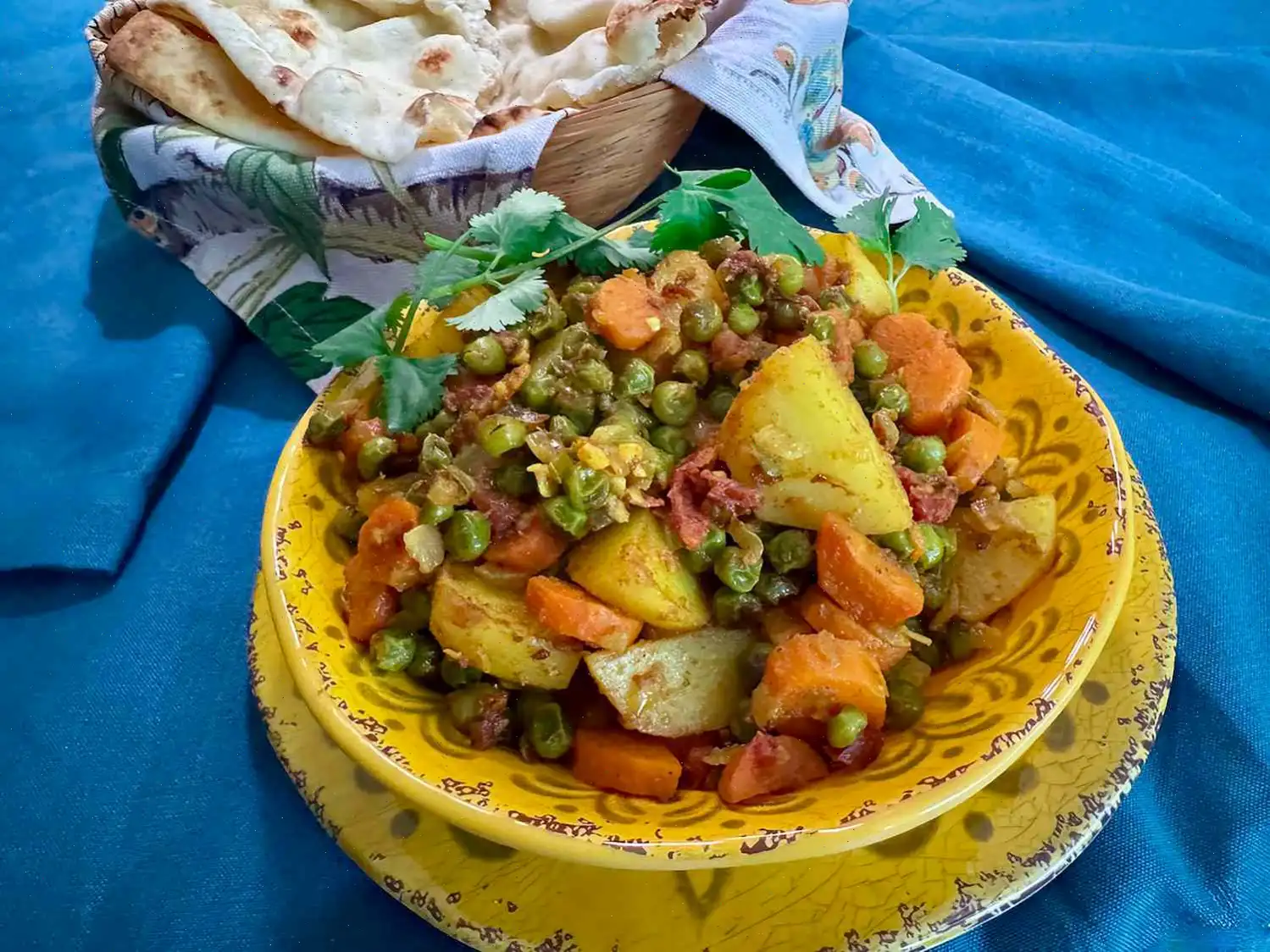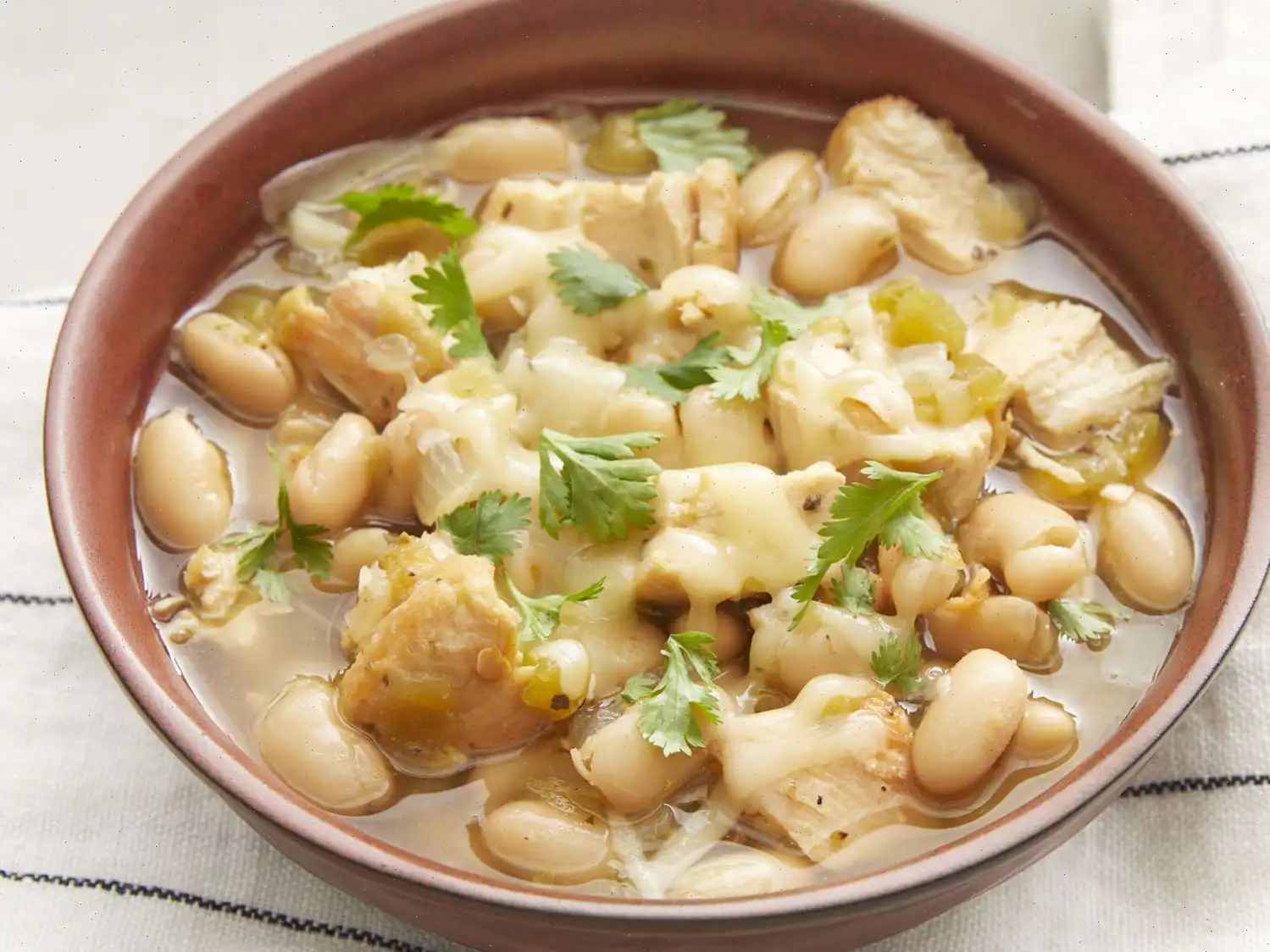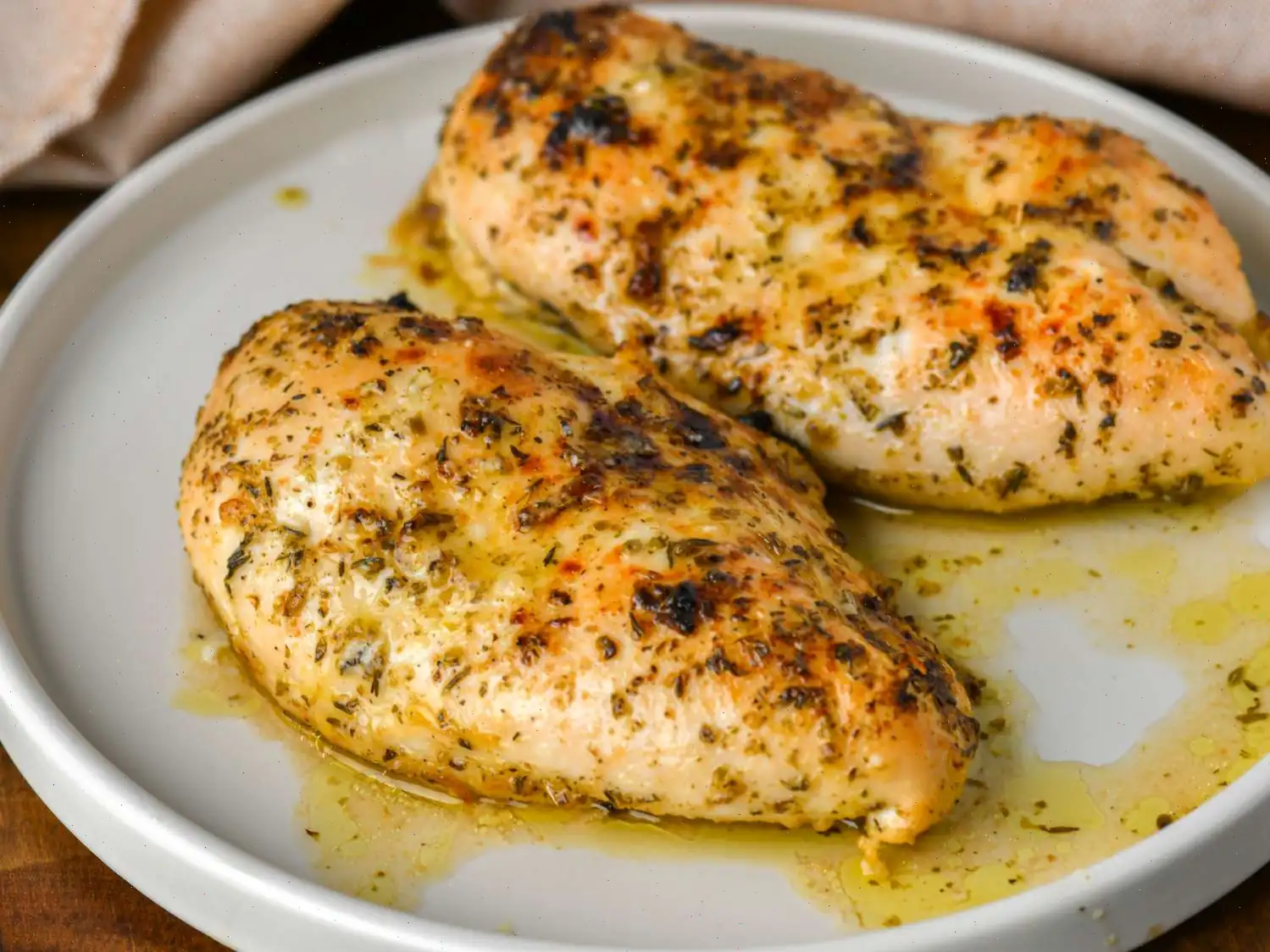
Mixed Vegetable Curry Recipe
Ingredients:
- 3 tablespoons ghee or clarified butter
- 1 cup finely chopped onion
- 1 tablespoon minced fresh garlic
- 1 (1/2 inch piece) fresh ginger, grated
- 1/2 cup chopped tomato
- 1 serrano pepper, seeded, membranes removed, minced
- 1 cup sliced, peeled carrots
- 1 cup frozen green peas
- 1 large russet potato (about 1/2 pound), peeled and cut into 1-inch pieces
- 1/2 teaspoon ground turmeric
- 1/2 teaspoon ground coriander
- 1/2 teaspoon ground cumin
- 1/4 teaspoon ground fenugreek seeds
- 1/4 teaspoon chili powder, or to taste
- 3/4 teaspoon salt, or to taste
- 1 tablespoon chopped cilantro, for garnish (optional)
Directions:
- Heat ghee in a large nonstick pan over medium heat. Add the chopped onion and cook, stirring occasionally, until the onion is lightly browned, about 8 minutes.
- Add the minced garlic and grated ginger to the pan. Stir and cook for another minute, or until fragrant.
- Stir in the chopped tomato, serrano pepper, carrots, peas, potato, turmeric, coriander, cumin, fenugreek, chili powder, and salt. Cook for about 5 minutes, stirring occasionally to combine the flavors.
- Reduce the heat to low, cover the pan, and let the vegetables steam in their own juices. Continue cooking until the potatoes are fork-tender, about 25 minutes. Stir halfway through the cooking time to ensure the vegetables do not stick to the pan. If necessary, add 1 or 2 tablespoons of water and continue cooking.
- Once the vegetables are tender, taste the dish and adjust the seasoning with additional salt if needed.
- Garnish the stew with freshly chopped cilantro, if desired, and serve warm. This dish pairs well with naan or another type of flatbread.
Nutrition Facts (per serving):
| Calories | Fat | Carbs | Protein | Sodium | Fiber |
|---|---|---|---|---|---|
| 244 | 10g | 34g | 6g | 440mg | 7g |
* Percent Daily Values are based on a 2,000 calorie diet. Your daily values may be higher or lower depending on your calorie needs.
The Story Behind Mixed Vegetable Curry
Mixed vegetable curry has deep roots in Indian culinary tradition, where vegetarian dishes have been an essential part of daily meals for centuries. Its origin is closely tied to the concept of using locally available seasonal vegetables, combined with a balance of spices that not only enhance flavor but also provide medicinal benefits. Early references to vegetable stews and spiced gravies can be found in ancient Indian texts, where they were often served during festivals or as part of religious offerings. Over time, this dish evolved into a staple comfort food that reflects the diversity of Indian cuisine.
Regional Variations and Characteristics
While the basic recipe remains consistentcarrots, peas, potatoes, tomatoes, and aromatic spicesregional variations bring unique twists. In North India, the curry tends to be richer, often using ghee and a creamier base, while South Indian versions may include coconut milk and curry leaves for a slightly sweeter, fragrant flavor. Eastern India sometimes incorporates mustard seeds and panch phoron, a blend of five whole spices, giving the curry a distinctive aroma. These regional touches highlight how geography, climate, and local produce influence the taste of the same dish across India.
What Makes It Different From Similar Dishes
Mixed vegetable curry is often confused with other vegetable-based Indian dishes like aloo gobi or vegetable korma. Unlike aloo gobi, which primarily features potatoes and cauliflower with a drier texture, mixed vegetable curry is wetter and includes a wider variety of vegetables. Vegetable korma, on the other hand, uses a rich, nutty, or creamy sauce, often with yogurt or cashews, while mixed vegetable curry focuses on a lighter, spiced tomato and onion base. This balance of flavor, texture, and spice level makes it uniquely versatile.
Where You Typically Find It
This dish is widely served across Indian homes as a staple dinner or lunch item, often accompanied by rice, roti, or naan. In restaurants, it is a common side dish alongside butter chicken, paneer tikka, or other main courses. Street food vendors may also serve it in small portions over steamed rice or flatbreads, offering a wholesome, affordable option for vegetarians. It is equally popular at festive gatherings, community meals, and celebratory feasts.
Interesting Facts About Mixed Vegetable Curry
- Many of the spices used, such as turmeric and fenugreek, have been prized in Ayurveda for their anti-inflammatory and digestive properties.
- The dishs colorful presentation is intentional; traditional Indian cooking emphasizes the visual appeal of food, believing it enhances taste and satisfaction.
- Though commonly vegetarian, the recipes spice profile and cooking method can easily adapt to include paneer, tofu, or even seafood, showcasing its versatility.
- Mixed vegetable curry has inspired fusion cuisines worldwide, from British Indian restaurants to Caribbean adaptations, reflecting global appreciation for its flavor and simplicity.
FAQ about Mixed Vegetable Curry Recipe
Comments
Heather Perez
10/16/2023 06:44:46 AM
Couldn't find any joy, so we added some curry powder and it turned out amazing. My wife, who is from the Caribbean, absolutely loved it. Thank you.








